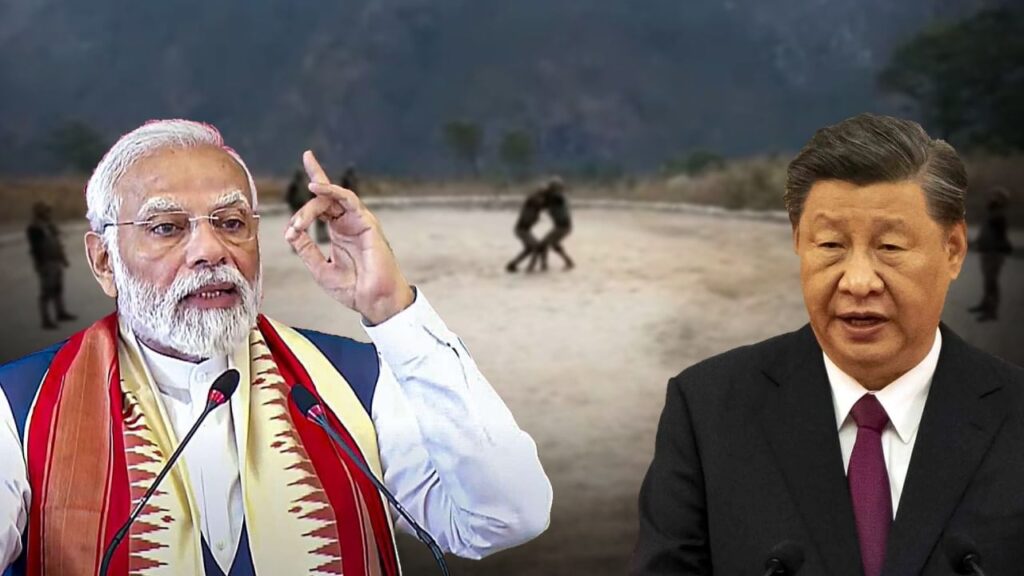News Desk, Kolkata. : In June 2020, a face-off between Chinese and Indian forces took place in the eastern Ladakh region, specifically in the Galwan Valley. While no shots were fired, it was a tense hand-to-hand confrontation. The Indian military entered the disputed area, leading to a physical clash where Chinese forces restrained their Indian counterparts. Thankfully, no bullets were fired, but the incident resulted in the tragic deaths of at least 20 Indian soldiers who fell into the Pangong Lake.
The illegal incursion into Indian territory by the Chinese forces on that day left scars, but India was ready to respond. If China used their Kung Fu or martial arts, India was prepared with its own indigenous martial arts – Gatka, Khukuri Dance, or Kalaripayattu.
Post the Galwan Valley conflict, various regiments of the Indian Armed Forces incorporated different styles of Indian martial arts into their training. The Punjab Regiment delved into Gatka, the Gorkha Regiment embraced the Khukuri Dance, and the Madras Regiment adopted Kalaripayattu. Particularly in border regions, military bases like Motaayan in Arunachal Pradesh witnessed the integration of martial arts training into the routine.
In the eastern part of Arunachal Pradesh, near the natural control line at Kibithu, a detachment of the Punjab Regiment is stationed. Major Kartik Joshi highlighted the unique challenges in the region, from traversing the Khadsrota River to facing unpredictable weather, daunting mountains, and mastering survival skills. To confront these challenges, physical fitness is crucial, leading to the inclusion of martial arts training, especially in the Martial Arts training centers of the Motaayan region.
Major General Prince Rohit, commanding officer of the unit, emphasized the necessity of being prepared for any sudden confrontation, like the one in Galwan. He stated that readiness was crucial, and hence, the military integrated martial arts training to be ready for any such attacks.
In addition to indigenous martial arts, Israeli martial arts gained popularity in the Indian Armed Forces post the Galwan clash. In the Northern Command of the Indian Army, an Israeli martial art named “Krav Maga” was introduced. This marked the beginning of incorporating martial arts into the Indian military. Subsequently, different regiments and units of the Indian Army adopted various martial arts forms.
A high-ranking military official mentioned, “We have some ancient Indian martial art forms that are suitable for us. In case of a sudden face-off like Galwan, we cannot afford to be unprepared. These martial arts will come in handy during such attacks.”
Another officer stated, “Several ancient Indian martial art forms are still relevant and useful for us. During hand-to-hand combat, these martial arts will prove invaluable.”
Ensuring the physical and mental well-being of the soldiers, the Indian military mandates a three-month preparation and skills test every three months for all personnel up to the age of 45. The test includes a 5-kilometer run in 25 minutes, with an additional two minutes for those over 30 years old. This holistic approach to fitness aims to maintain the overall health of the armed forces.
However, despite recent modifications in the evaluation process, a new method has yet to be effectively implemented. The focus remains on refining the soldiers’ physical fitness through various fitness programs, including martial arts.
In conclusion, the aftermath of the Galwan Valley clash has seen a significant transformation in the training methodologies of the Indian Armed Forces. From integrating traditional Indian martial arts to embracing Israeli techniques, the military is gearing up for any potential face-off. The narrative unfolds with a commitment to physical and mental fitness, ensuring that the armed forces are not only ready for conventional warfare but also for unexpected challenges like the Galwan Valley incident.
DISCLAIMER
Our news media denounces any form of bias and disapproves of sensationalism. The disseminated news is entirely educational and aimed at social awareness. Our media maintains absolute impartiality, adhering solely to the purpose of education and social consciousness.


